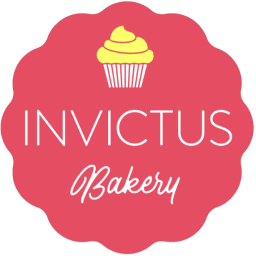It is no surprise that as our world has gotten more intensely complicated over the past year, that therapists are seeing an increase of clients who are experiencing significant symptoms of anxiety. Physical symptoms such as racing hearts, shortness of breath, headaches, sweaty palms, sleeplessness, stomach problems, and nausea that become not only unmanageable but can even escalate into full-blown panic attacks. I would say that it’s an epidemic within a pandemic.
As we try to navigate these unprecedented circumstances, we are finding that the outlets we used to rely on to manage our stress are either no longer available to us or no longer seem to be working. Things like going to the gym, social activities, participating in sports, shopping, self-care, going to the movies, concerts, restaurants and so on, used to counterbalance whatever stressors we faced in our daily lives. With a shortage of alternatives, anxiety has grown and with it, what I call “anxiety about getting anxiety”; the anticipatory dread of developing those extremely uncomfortable symptoms of anxiety. This secondary anxiety is what often takes previously manageable stress to an unmanageable level.
People dealing with this scenario describe feeling “out of control,” and it can be extremely frightening as ruminating fear-based thoughts snowball and careen towards some imagined catastrophic outcome. Those thoughts take hold and influence the way that we feel, which in turn influences the choices we make and the actions to follow. One of the most widely utilized therapeutic treatments to help clients interrupt that cycle is Cognitive Behavioral Therapy (CBT), an evidence-based model that has been shown to be widely effective for mood disorders as well as many other presenting issues.
CBT works like this:
Something happens, it could be anything (Situation). We interpret this situation (Thoughts) based on ideas we have about the world & ourselves in it (Core Beliefs). The thoughts that we have trigger feelings (Emotional Response). Based on these feelings, we make decisions about how to act moving forward (Behavior). If we are operating from a positive core belief, the outcome is likely to be desirable. However, if we are operating from a negative core belief, we can expect the opposite.
Here’s an example:
Situation: My friend Sue doesn’t return my text.
Core Belief: I am not loveable.
Thought: Sue doesn’t like me & is avoiding me. No one likes hanging out with me. I’m boring & no fun. I will always be alone.
Emotions: Sad, lonely, afraid
Behavior: Crying, isolate in room, can’t focus on homework, difficulty sleeping.
Cognitive Behavioral Therapy (CBT) works with people to identify their Core Beliefs, and on changing thoughts from Irrational to Rational (based on evidence) so that emotions and actions will lead to a more favorable outcome. For instance, in the example above a more rational, fact-based thought process could be “Sue always returns my texts when she is able. She texts me often and accepts my invitations to hang out. She also invites me to do things.” Emotions based on those thoughts might be: patience, calmness, optimism. Behavior based on those feelings might be: having dinner with family, doing homework, reaching out to another friend. As you can imagine, the outcome in the second scenario would be vastly different than in the first.
Regardless of the situation, even one as extraordinary as a pandemic, we can learn to manage our anxiety by being mindful of the thoughts we are having in response to it. Once we learn to recognize our core beliefs and the irrational thoughts that can get triggered by a situation, we can make the decision to counter those thoughts with more reasonable, healthy, productive ones. Cognitive Behavioral Therapy is a useful and easily learnable path to controlling our reaction to a world that at times, can feel wildly out of control.
What is nice about CBT is that it works well with and is adaptable for people of all ages including children, adolescents, and adults. In addition, it can be utilized with a variety of presenting concerns, such as both depressive and anxiety disorders, post-traumatic stress disorder, eating disorders, and many others. CBT can be just as effective online as in face-to-face therapy, which is particularly useful with the current increased use of Teletherapy. While therapists do not need to be certified to utilize CBT, those who specialize may have a certification. If interested, The National Association of Cognitive-Behavioral Therapists, www.nacbp.org, has a list of certified CBT practitioners. To find other therapists who regularly utilize CBT in their practices, you can request one from your insurance company, or go to the Psychology Today websites therapist finder page and filter for CBT, as many qualified therapists are available to work with you using this very effective approach.
Written by:
Suzanne R. Benko, LMFT





